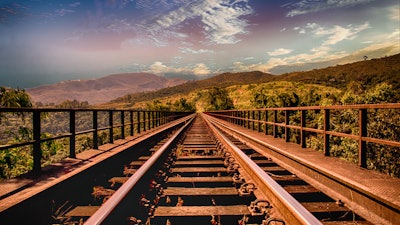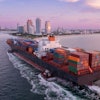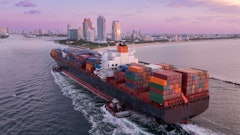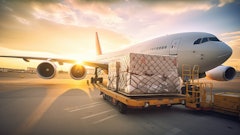
Railroads may bring a feeling of nostalgia for people who appreciated how they made moving freight effective and efficient in the early days of the United States. Now, the industry has moved from nostalgia to high-tech, as the industry relies on big data to improve the way freight moves from place to place.
In the mid-century, the railroad industry tried to go high-tech by requiring all railcars to have tracking barcodes that were read by scanners placed along the lines. This system did not last long because railroad cars get dirty. And the dirt covered the barcodes, making them unscannable.
Tech devices on railcars
Nearly 30 years later, the rail industry discovered a different way to track the whereabouts of their cars. The automatic equipment identification (AEI) tag allowed railyards to become automated, as all cars and locomotives needed to be tagged by the end of 1994.
Rather than relying on clean railcars and barcodes, the 3x10-inch tags use computer circuits to communicate with trackside readers. The power for these devices is given through the reader, which reduces costs for railcar owners. According to the Association of American Railroads (AAR), there are over 140,000 miles of rail in 49 states in the United States. With this much room, it could be difficult to track freight nationwide. But, the AEI tags make it easy for the 150,000 employees in the railroad industry to see where cars and locomotives are in real-time.
AEI tags use radio transponders to send battery-free messages. With a 90OMHz radio signal, the tags tell the trackside scanners who owns the car, what type of car it is and what its road number is. According to Trains Magazine, there are about 1,200 trackside readers in the United States. The white plastic boxes sit on triangular stands and many are accompanied by video cameras.
How AEI tags help the freight industry
Data is vital in the shipping industry. Consider the last time you purchased an item online. As you await the arrival time, you can track it from the moment the retailer drops the box off at their shipping company of choice. Tracking details have become so precise that you can watch the vehicle carrying the item move through your neighborhood.
Now, take that precision tracking to the next level. When railcars travel across the country, the companies that rely on them appreciate knowing where their items are. Most likely, you appreciated knowing whether or not your item was going to be on time. Those waiting for their freight to arrive feel the same way. And, with AEI tags, they know if their freight is delayed or on time. They can use that information to plan their next course of action. Without the tags, the companies waiting on the items in the railcars are left with questions and no answers.
Relying on CLM systems
The data collected by the AEI tags and the trackside readers is shared through car location message systems. These contract lifecycle management (CLM) systems give rail yards what they need to follow rail cars in real-time. They can then share the data with customers, so they know when their items are arriving. This information is vital for manufacturers who need raw materials in a timely fashion.
CLM systems reduce the chances of documentation errors because the readers provide the data - not people. The data tags allow rail yards to standardize reporting, which lets them better communicate with their customers. According to the AAR, over 1.2 million rail cars have been tagged. Considering how many rail cars move through the 140,000 miles of railroad, the possibility of human error is massive. The AEI tags and the CLM systems together make the process reliable and accurate.
Integrating AEI and CLM systems to collect data
The trucking industry developed this process, along with members of the maritime industry. With all three vital forms of long-distance transportation using the same type of tracking, clients can follow their shipments no matter where it is whether on the water, highway, or rail. This only works if all companies use CLM systems to share data with their customers.
With the integrated systems, shipping freight becomes more efficient. It allows shipping companies to see where shipments could be delayed due to the weather hazards or construction slowdowns.
They also help companies use data in innovative ways. For example, they can see how the weather and performance affect fuel consumption. If locomotives are traveling against the wind, does fuel consumption increase? What happens if the locomotive drives against the wind at a lower rate of speed? The plethora of data can help decrease costs not only for the shipping company but for customers who use them.














![Pros To Know 2026 [color]](https://img.sdcexec.com/mindful/acbm/workspaces/default/uploads/2025/08/prostoknow-2026-color.mduFvhpgMk.png?ar=16%3A9&auto=format%2Ccompress&bg=fff&fill-color=fff&fit=fill&h=135&q=70&w=240)